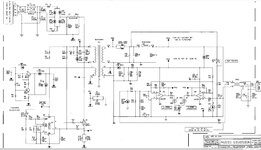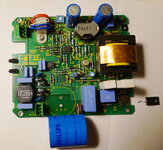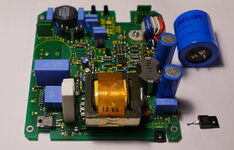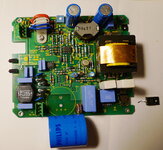hafrse
Full Member level 3

Hello,
I have a power supply/charger for an instrument, I have no history of it but when charging the instrument (12V NiCd battery) today, I noticed that the charger was quite hot, not sure if that is normal since I only had this charger for a couple of days.
I switched off and powered back again, the fuse (1A) went off very fast. I located the fault in the MOSFET tranansitor Q3 where all the pins were shorted!
No problem to replace Q3 but any clue what caused that? should I look on the other side of the transformer in case of som kind of short or heavy load in that circuit?
Thanks!
I have a power supply/charger for an instrument, I have no history of it but when charging the instrument (12V NiCd battery) today, I noticed that the charger was quite hot, not sure if that is normal since I only had this charger for a couple of days.
I switched off and powered back again, the fuse (1A) went off very fast. I located the fault in the MOSFET tranansitor Q3 where all the pins were shorted!
No problem to replace Q3 but any clue what caused that? should I look on the other side of the transformer in case of som kind of short or heavy load in that circuit?
Thanks!







